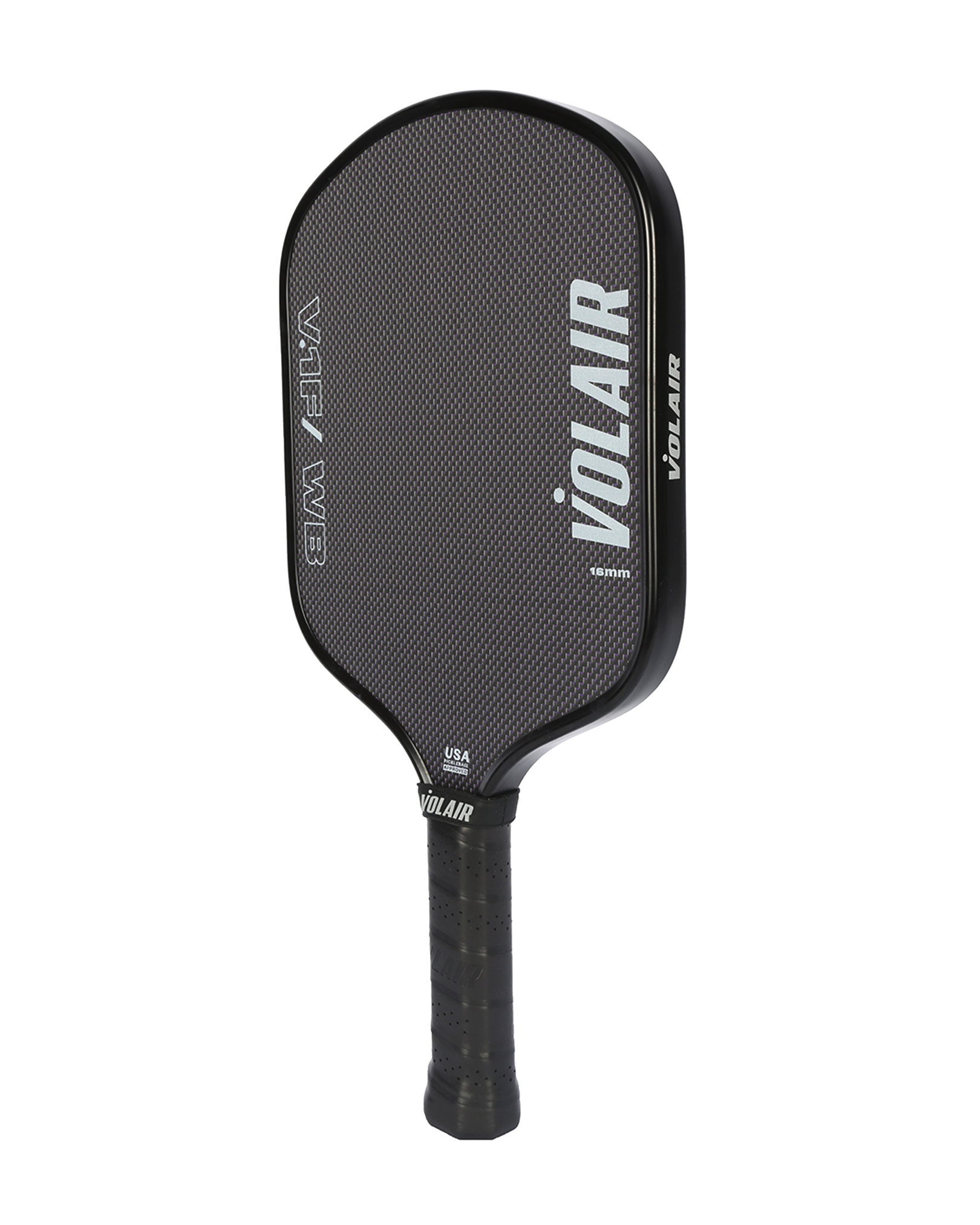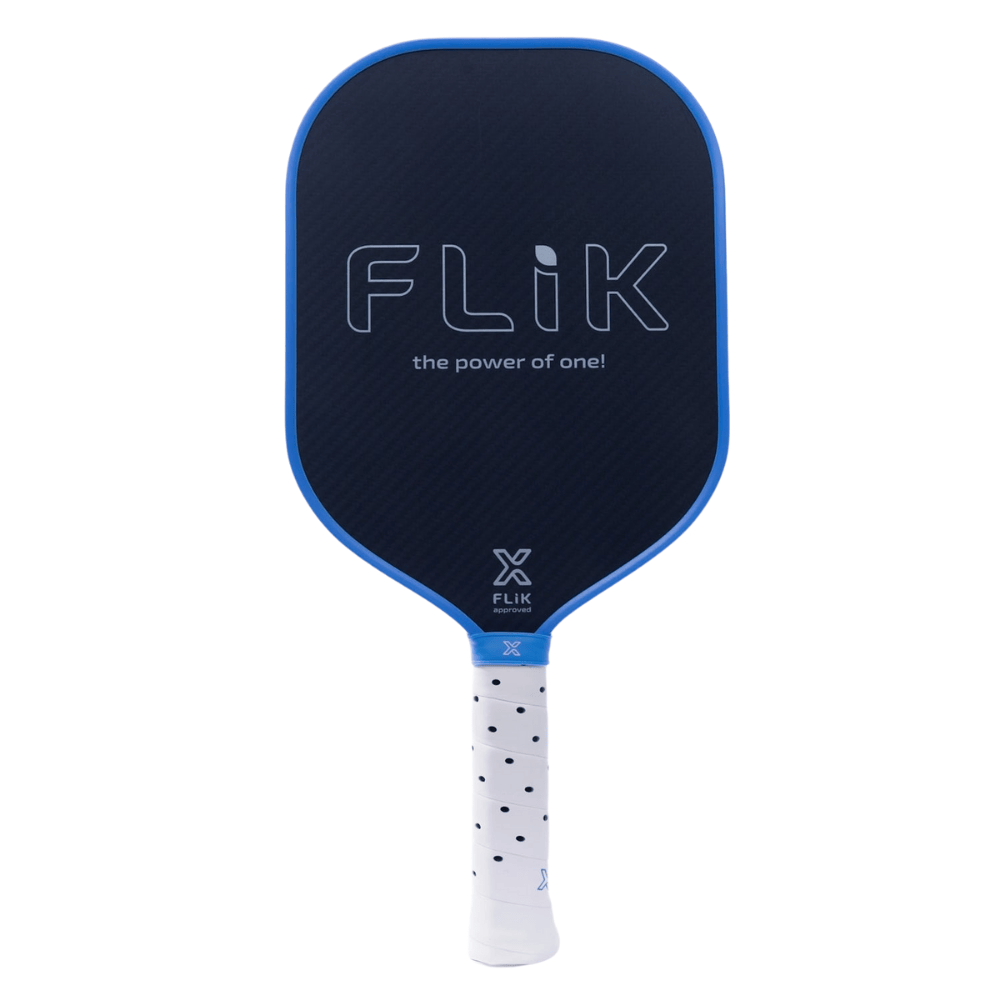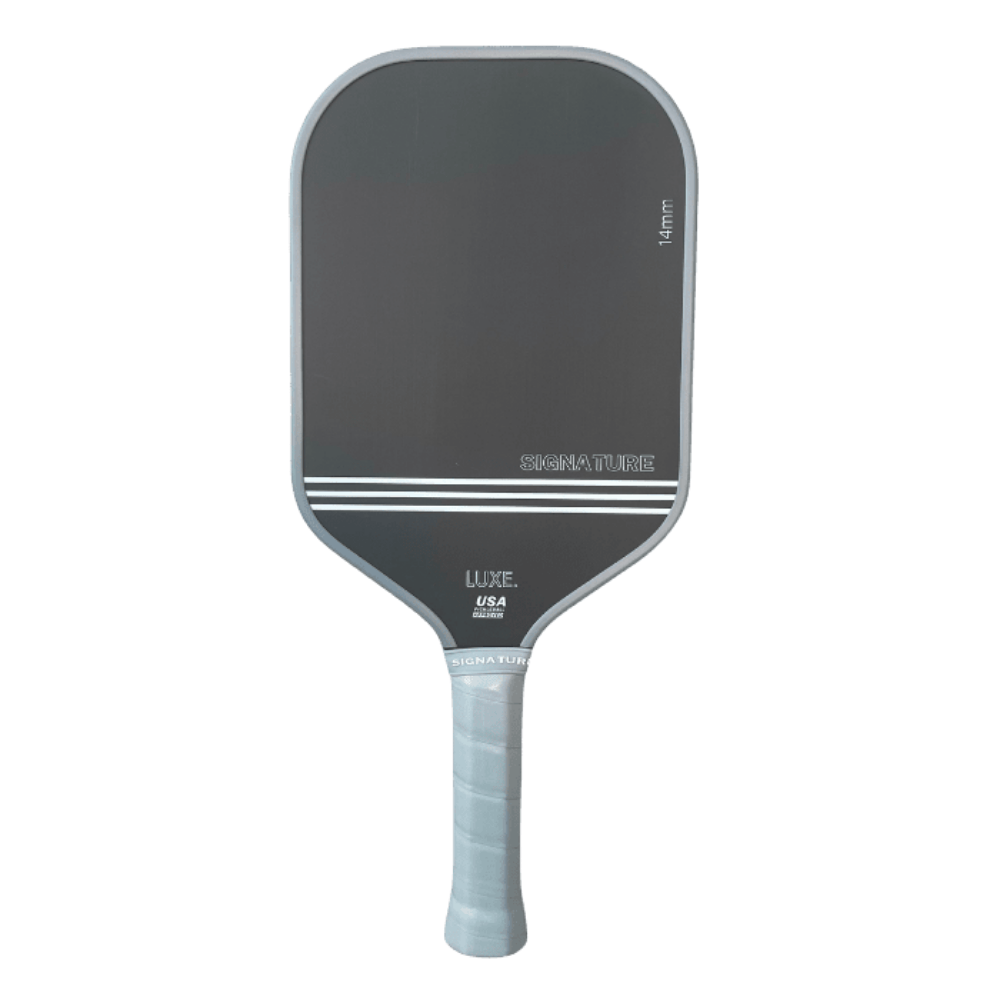Choosing the right paddle thickness has a big impact on feel and results. This guide compares 16mm vs 14mm pickleball paddles so you can match power, control, and comfort to your style.
Table of Contents
Key Differences: 16mm vs 14mm Pickleball Paddles
Power vs. Control
16mm: The thicker core absorbs more impact and keeps the ball on the face a touch longer, which makes it easier to dial back pace and hit precise dinks, drops, and resets. 14mm: The thinner core returns energy faster, adding “pop” off the face for drives and put-aways. You’ll feel the ball leave quicker, which rewards an attacking style.
Feel & Feedback
16mm: Softer, more cushioned contact with fuller feedback across the sweet spot—great for players who read the ball through the paddle and value a smooth, connected feel. 14mm: Crisper, more direct impact. The response is immediate, which many aggressive counter-punchers prefer when hand battles get fast at the kitchen.
Durability & Stability
16mm: Extra core material generally improves torsional stability and helps the paddle hold its play characteristics over time. 14mm: Quality models remain durable, but off-center hits can feel less stable and consistency may vary a bit more as the paddle wears—brand and build matter here.
Weight & Maneuverability
16mm: Often a touch heavier or more head-stable, which can slow swing speed slightly but steadies blocks and counters. 14mm: Usually lighter and quicker through the air—great for fast hands and quick exchanges at the net.
14mm vs 16mm Pickleball Paddles: Side-by-Side Comparison
| What changes | 16mm (thicker core) | 14mm (thinner core) |
|---|---|---|
| Power | More moderated pace; easier to take pace off. | Higher pop and quicker ball exit. |
| Control & Touch | Excellent for dinks, drops, resets. | Good, but less dwell time on the face. |
| Sweet-spot forgiveness | Larger and more forgiving on mishits. | Smaller; cleaner contact rewarded. |
| Stability & Feel | Softer feedback; better damping and torsional stability. | Crisper feel; can twist more on off-center hits. |
| Weight feel | Slightly heavier, steadier swing. | Lighter overall; faster hands at the kitchen. |
| Best for | Control-first players, consistency, rally building. | Aggressive drivers, counter-attacks, quick finishes. |
Featured 16mm and 14mm Pickleball Paddles

Volair V.1F/WB (16mm)
Thermoformed Forza build with perimeter foam and a T700 carbon/PET hybrid face. The 16mm core adds dwell time for touch and steadier blocks, while still delivering modern pop and spin. USAPA approved; includes a neoprene cover.

Body Helix FLIK Gen 3 (16mm)
Built to last with a floating core and black PP honeycomb. In 16mm, it cushions impact for cleaner drops and resets, while the T700 carbon + blue Kevlar stack preserves punch and stability match after match.

Phantom Eternal (14mm) + Cover
A 14mm mid-body with a T700 raw carbon face over a PP honeycomb power core. Expect easy ball speed and quick counters versus 16mm options, with a confident sweet spot as you build placement. USA Pickleball approved; cover included.

Luxe Signature (14mm or 16mm)
Same mold, two feels: choose 16mm for softer touch and control or 14mm for added pop. Thermoformed unibody, foam-filled edges, and a raw Toray T700 carbon face deliver spin and a lively sweet spot at ~7.8 oz with a 5.5" handle.
FAQs: 16mm vs 14mm Pickleball Paddles
Is a 16mm paddle better than 14mm?
No single thickness is best for everyone. 16mm favors control and stability; 14mm favors pop and speed. Choose based on how you win points.
Will a 14mm paddle hurt my touch game?
It can feel crisper with less dwell time, so touch shots may take more practice than with a 16mm. Many players adapt by softening grip pressure.
Do thicker cores always weigh more?
Often, but not always. Final weight depends on face material, edge guard, handle, and layup. Check each paddle’s listed weight range.
What if I’m unsure between 14mm vs 16mm?
Demo both if you can. If you value resets, dinks, and consistency, start with 16mm. If you attack off the bounce and want extra pace, try 14mm.








